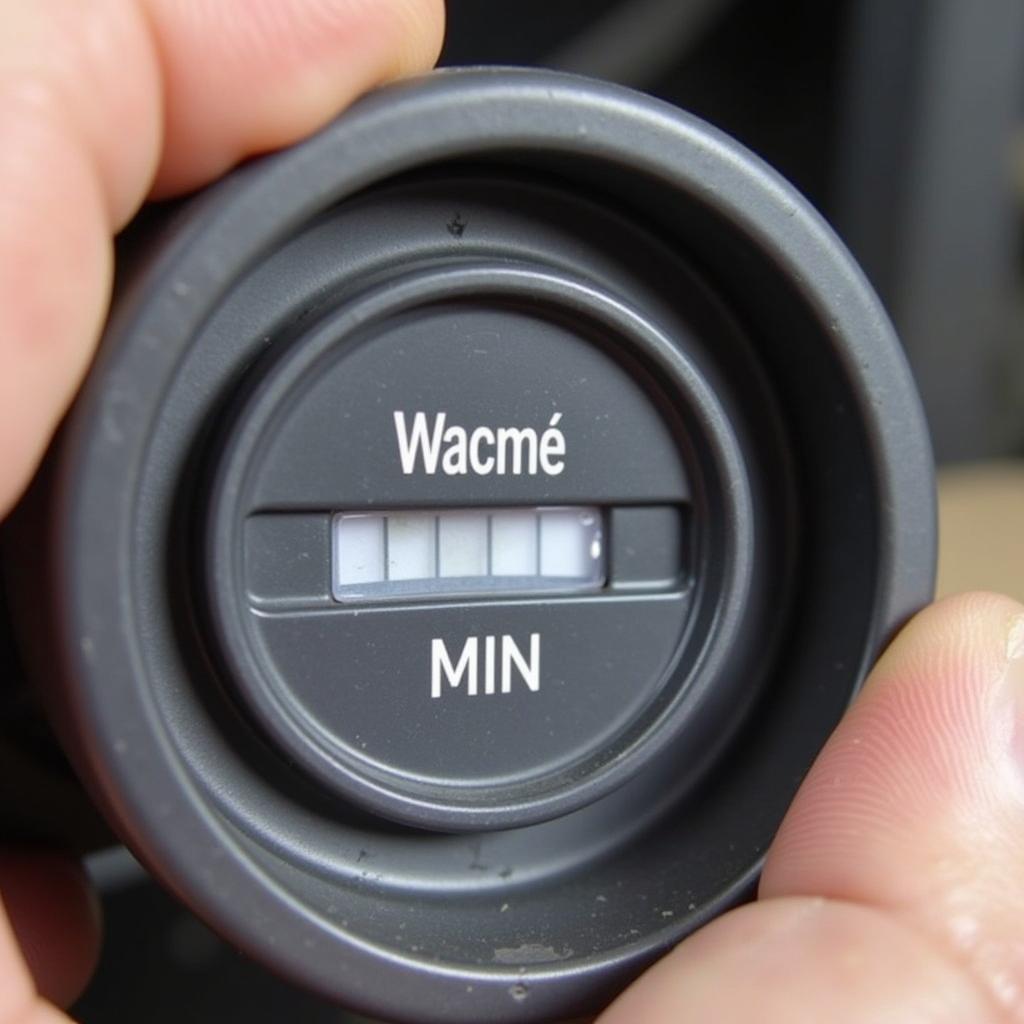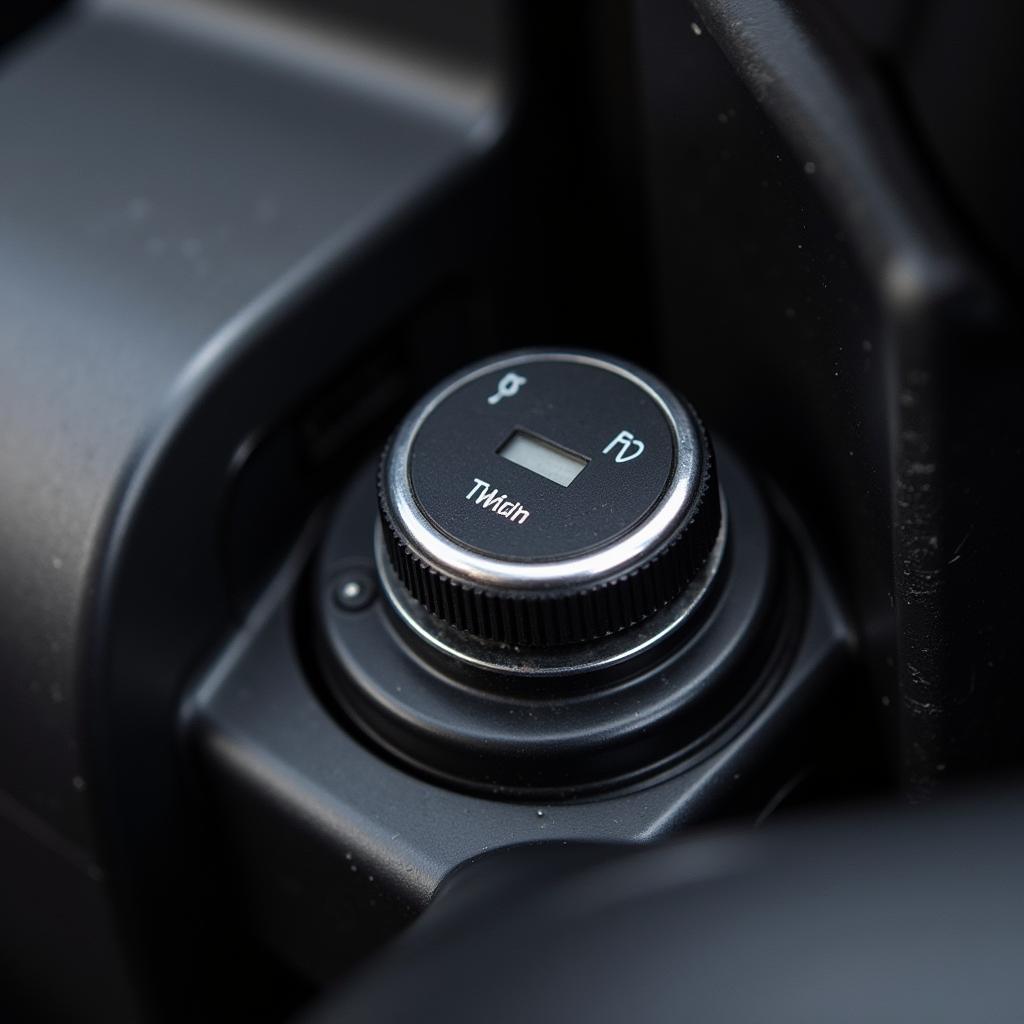If you’re driving a 2012 Ford F250 and see the dreaded “Brake Fluid Low Warning AF” message, it’s crucial to address it immediately. This warning indicates a potential issue with your truck’s braking system, jeopardizing your safety and others on the road.
This comprehensive guide will walk you through the possible causes of the “2012 f250 brake fluid low warning af” message, how to diagnose the problem, and the steps to rectify it.
Understanding Your Truck’s Brake System and the Warning
Your F250’s braking system relies on hydraulic pressure to function correctly. When you press the brake pedal, it activates a piston in the master cylinder, pushing brake fluid through the brake lines to engage the calipers or wheel cylinders. These components then press the brake pads or shoes against the rotors or drums, slowing down or stopping your truck.
The “Brake Fluid Low Warning AF” message typically appears when the brake fluid level in the master cylinder reservoir drops below a safe level. This drop can occur for several reasons, each demanding attention:
Common Causes of “2012 f250 brake fluid low warning af”
1. Brake Fluid Leak:
A leak in the brake lines, hoses, calipers, or wheel cylinders is the most common culprit for low brake fluid. As brake fluid escapes, the system loses pressure, triggering the warning light.
Expert Insight: “Always prioritize inspecting for leaks if you encounter a low brake fluid warning,” advises John Miller, a seasoned automotive engineer with over 20 years of experience. “Even a small leak can significantly compromise braking performance and pose a severe safety hazard.”
2. Worn Brake Pads:
While not a direct cause of fluid loss, severely worn brake pads require more brake fluid to be pushed into the calipers to maintain the same level of braking force. If your brake pads are significantly worn, it can mimic a low brake fluid condition and trigger the warning.
3. Faulty Brake Master Cylinder:
The master cylinder is the heart of the braking system. If its seals wear out or become damaged, it can lead to internal leaks, reducing the effective fluid volume and triggering the warning light.
4. Issues with the ABS System:
While less common, problems with the Anti-lock Braking System (ABS), particularly with the ABS module or sensors, can sometimes cause the “2012 f250 brake fluid low warning af” message to illuminate.
Diagnosing the Problem: What to Look For
If the “Brake Fluid Low Warning AF” message appears, immediately and safely park your vehicle and begin the diagnostic process:
- Check the Brake Fluid Level: Open the hood and locate the master cylinder reservoir, typically a translucent plastic container with a black cap labeled “Brake Fluid.” Visually inspect the fluid level. If it’s below the “MIN” or “LOW” mark, you have a low brake fluid issue.
 Checking Brake Fluid Level in 2012 F250
Checking Brake Fluid Level in 2012 F250
-
Inspect for Leaks: Examine the area around the master cylinder, brake lines, hoses, calipers, and wheel cylinders for any signs of fluid leaks. Look for wet spots, drips, or a noticeable loss of fluid.
-
Check Brake Pad Wear: If the fluid level is adequate, inspect the brake pads through the spaces between the wheel spokes. If the pad thickness is less than ¼ inch or you notice a grinding sound when braking, they likely need replacement.
How to Address the “2012 f250 brake fluid low warning af” Warning
Important: If you identify a brake fluid leak, immediately stop driving your vehicle and consult a qualified mechanic to avoid potential accidents caused by brake failure.
-
Adding Brake Fluid: If the brake fluid level is low but no leaks are detected, carefully top off the master cylinder reservoir with the correct brake fluid type (DOT 3 or DOT 4, as recommended in your owner’s manual) until it reaches the “MAX” line.
-
Addressing Leaks: Repairing brake leaks involves locating the source of the leak and replacing the damaged component, which could be a brake line, hose, caliper, or wheel cylinder. This task typically requires professional mechanical expertise.
-
Replacing Brake Pads: If worn brake pads are the culprit, replace them with new ones. This procedure can be done at home with the proper tools and knowledge or by a trusted mechanic.
-
Professional Diagnosis and Repair: If you’re uncomfortable with any of these steps or suspect a more complex issue, such as a faulty master cylinder or ABS problem, take your vehicle to a qualified mechanic specializing in brake repair for a thorough inspection and diagnosis.
Preventing Future “2012 f250 brake fluid low warning af” Warnings
Regular maintenance plays a vital role in preventing future “Brake Fluid Low Warning AF” messages:
- Regular Brake Fluid Flushes: Aim to flush your brake fluid every 2-3 years or as recommended in your owner’s manual. Flushing replaces old fluid with fresh fluid, preventing corrosion and maintaining optimal braking performance.
- Timely Brake Pad Replacement: Don’t wait for the brake pads to wear down completely. Replacing them when they reach the recommended thickness ensures consistent braking performance and avoids unnecessary strain on the braking system.
- Routine Brake Inspections: Include a thorough brake inspection during your regular vehicle maintenance checks. A mechanic can identify potential issues early on, preventing costly repairs and ensuring your safety.
Conclusion
The “2012 f250 brake fluid low warning af” message should never be ignored. Address this warning promptly to avoid potentially dangerous braking system issues. Understanding the causes, implementing appropriate solutions, and adhering to a regular maintenance schedule can keep your Ford F250’s braking system operating at peak performance, ensuring your safety and peace of mind on the road.


